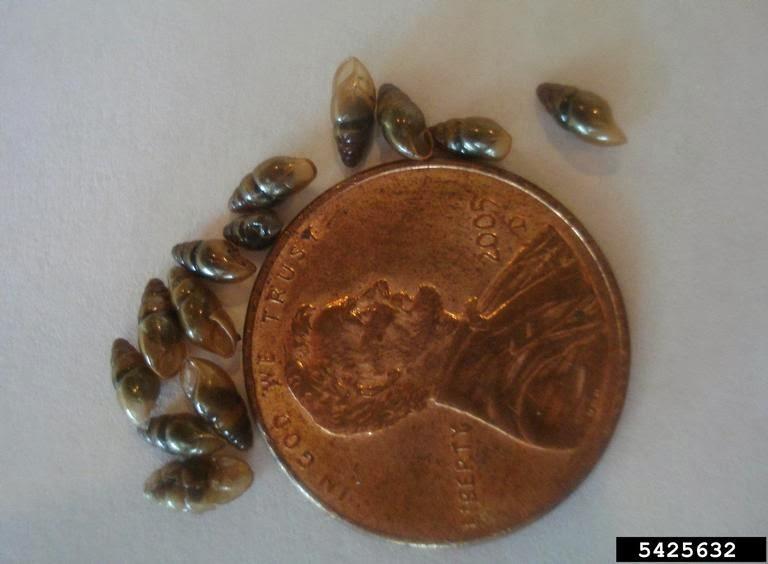News Alert Cheesman Canyon / Deckers Area Threatened
 The U.S. Forest Service has confirmed that the South Platte River downstream from Cheesman Reservoir has been impacted by New Zealand Mudsnails. The invasive species was found at the Lone Rock Campground area about one mile upstream from “Deckers’ Corner.”
The U.S. Forest Service has confirmed that the South Platte River downstream from Cheesman Reservoir has been impacted by New Zealand Mudsnails. The invasive species was found at the Lone Rock Campground area about one mile upstream from “Deckers’ Corner.”
While more information will be gathered to determine how impacted the area is, the fact that the New Zealand Mudsnail is in the water system on this tailwater is definitely an attention-getter.
New Zealand mudsnails are an invasive freshwater snail. They are voracious eaters that reproduce rapidly, eating much of the available food. This negatively affects aquatic insect larvae, native snails, as well as fish populations. Humans inadvertently move NZMs from one stream to another when they cling to waders, boots, boats, dogs and other gear. They can reproduce sexually or asexually, so just one snail can start an entirely new population! They are also able to pass through a fish’s digestive system unharmed, leaving the fish malnourished.
Since no boats are allowed on Cheesman Reservoir, the NZM would have most likely been transported by a wading angler. It is also suspected that the warmer temperatures and high flows have contributed to the survival of the Mudsnail.
The good news is that habitat along this portion of the South Platte is not ideal for NZM. In 2006, the Mudsnails were reported in Elevenmile Canyon but after a few harsh winters, they were cleared up to a large extent. The downside is that any stream improvements will not able to move forward in the near future.
Anglers are reminded that it is important to wash waders and wading boots thoroughly when traveling from one fishery to another – and even from spot on the river to another. Inspecting nets and giving them a good rinsing is also a good habit to get into to keep our fisheries free of invasive species.
The Colorado Parks and Wildlife suggests that people recreating in Colorado’s waters should scrub the bottom of boots or waders with a brush and remove all mud, plants, and organic materials in between each and every use. Then, they recommend ways to keep your waders and boots clean:
Option 1
Spray or soak waders and gear with 140° Fahrenheit water for at least 10 minutes.
Option 2
Dry your waders and equipment completely for a minimum of 10 days in between each use (remember that mudsnails can survive several days out of water).
Option 3
Place waders and boots in a freezer overnight between uses.
We will keep you posted as more information is gathered. In the meantime, please take the above precautions as you explore our fisheries these fall months. Tight lines and be safe!

